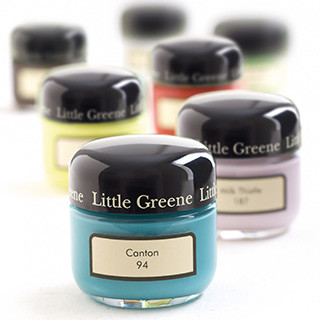How Green is Green Paint?

My husband has a super cool job seeking out new sustainable technologies for a global corporation so sustainability is a hot topic in our house. Our dining table discussions span a vast array of exciting new approaches to helping solve the climate change crisis. He regularly comes in from work enthused about the latest technology he learned about and I often wonder what I could do differently at work. I am conscientious about my fabric and carpet specifications, trying to keep to natural products, and I am considerate about planning my orders to keep fuel consumption down, but I’m compelled to do more.

Surely, I’m not the only Interior Designer that feels guilt about the contribution toxic paint makes to landfill. I’ve taken heart when I’ve heard the noise paint suppliers make about the changes they are instigating to their industry. But I have started to wonder how much of this noise is making a real difference. I want to know what choices I can encourage that will bring real change to our world’s immediate problems.
So I’ve been researching. Dangerous, I know! I want to know what are the important factors to consider when you want to make ethical paint choices? Here’s what I’ve discovered.

Reducing volatile organic compounds (VOCs) in paint is a major initiative. VOCs are the main ingredients in paint that help the product flow out post application so brush marks disappear and an even finish is achieved. VOCs evaporate away from paint into the air even at room temperature. Although the impact of the VOCs from paint on atmospheric pollution is very small (less than 2 per cent of the total amount of VOCs emitted), we know they contribute to indoor air pollution.
Edward Bulmer is an eco-campaigner and is prominent for his work in this area. He works to encourage the industry to make cleaner, safer, non-toxic paint. He also has his own paints. It’s worth taking his words into consideration when working out what the Low VOC labels really mean to you.
“Low VOCs in paint is the law, it should not be a marketing claim. We say don’t always believe what you read. There is no such things as no VOCs, you create VOCs when you fry bacon and eggs! The VOC rating for our emulsion is less than 0.2% and that is amongst
the lowest VOC rating of any paint sold in the world. There is no such thing as VOC FREE paint.”

Reducing Packaging, encouraging recycling and using recycled content in packaging is something all paint suppliers should be doing. Happily, many are working hard in this area. Two companies that really stand out in the crowd are Painthouse, who use no plastics and minimal cardboard, and Mylands, who recycle all cardboard and paper packaging as well as waste solvent.
A really interesting initiative is available through Community RePaint. Dulux has been
encouraging people to pass on their leftover paint rather than store it in their garage through sponsorship of Community RePaint. This scheme collects and redistributes
leftover paint to those in social need. In 2018, Community RePaint distributed more than 300,000 litres of paint to individuals and community projects.

Knowing what I know now I would look for paints that use natural products. If its smells bad and I don’t understand what an ingredient is it’s probably not something I would want on my walls. Paints that emphasise the use of natural pigments will give you a deeper longer lasting effect which seems a no brainer! And finally, make sure you estimate accurately. You can buy paint by the litre so don’t just buy a 5Litre can. Many websites like Dulux or Little Greene or Farrow & Ball have estimate tools on their websites. Use them and avoid creating unnecessary waste.
